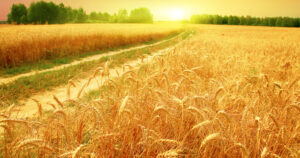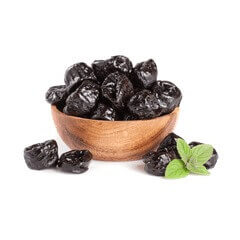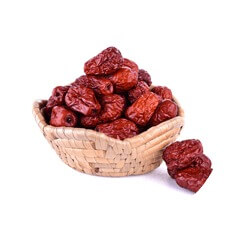Importance of Wheat around the world
Wheat is a cereal grain that is extensively grown and consumed around the world. It is the most significant staple meal for a vast section of the world’s population, supplying necessary nutrients as well as being a key source of carbohydrates. Wheat is a grass that belongs to the genus Triticum and is grown in a variety of climates ranging from temperate to subtropical.
History
Wheat has a long history beginning with ancient civilizations, where it was first domesticated more than 10,000 years ago. Wheat was recognized as a staple meal by the ancient Egyptians, Greeks, and Romans, and it swiftly expanded over the Mediterranean and into Europe. Wheat is now the world’s second most extensively cultivated grain crop.
The major wheat-producing countries
China, India, Russia, the United States, and France are major wheat-producing countries. These five nations alone produce more than half of the world’s total wheat output, with China and India leading the way, followed by Russia, the United States, and France. Other notable wheat-producing countries are Australia, Canada, Germany, and Kazakhstan. Global wheat output has increased in recent years, owing primarily to rising food demand in emerging nations and the growing popularity of wheat-based goods such as bread, pasta, and noodles.

The major wheat-consuming countries
China, India, the United States, Indonesia, and Brazil are the major wheat-consuming countries. These countries also have the world’s greatest populations, hence wheat as a staple food is in high demand. Wheat is popular in these nations in a variety of forms, including bread, pasta, noodles, cookies, and pastries. Russia, Mexico, Pakistan, Bangladesh, and Egypt are all important wheat consumers. Wheat demand is likely to rise in the future years as the world’s population grows and dietary habits change.
The Major Countries Facing Shortage of Wheat
Some nations are facing a wheat shortage, either owing to a lack of domestic production or limited access to imported wheat. Among these countries are North Korea, Yemen, Venezuela, Zimbabwe, and South Sudan. These countries confront a number of obstacles, including economic insecurity, political strife, and inadequate infrastructure, making it difficult for them to grow enough wheat to fulfill domestic demand. In certain circumstances, these countries face difficulties in importing wheat due to trade prohibitions or logistical issues. As a result, food shortages and high food costs may occur in many countries, affecting the health and well-being of their inhabitants. It is important to note that food security is a complicated issue that is affected by a variety of factors, including production, distribution, and access to food. Countries experiencing wheat shortages may also experience food insecurity and shortages of other primary crops, which can have a severe impact on their populations. To address these difficulties, a multifaceted strategy is required, including investments in agriculture and infrastructure, assistance for food security programs, and efforts to promote stability and peace in impacted regions.

Types
Wheat comes in a wide range of varieties, each having its own distinct qualities and purposes. The two most frequent varieties of wheat are hard and soft wheat, with hard wheat being higher in protein and gluten and soft wheat being lower in protein and gluten. Hard wheat is often used to make bread, and soft wheat is used to make cakes, pastries, and noodles. In addition to these two primary forms of wheat, there are unique kinds of wheat, such as durum wheat, which is used to make pasta, and spelt wheat, an ancient grain that is having a rise in popularity due to its distinct flavor and health advantages. Wheat is a high-nutritional-value food that contains carbohydrates, fibre, protein, vitamins, and minerals. It is high in carbohydrates which are the body’s major source of energy, and low in fibre, which helps to regulate digestion and avoid constipation. Wheat also has a high protein content, which is necessary for the body’s tissue construction and repair, as well as for maintaining a strong immune system.
Benefits
Wheat has environmental advantages in addition to nutritional benefits. It is a very efficient crop, providing a significant amount of food per unit of the area while requiring relatively modest water and fertilizer inputs. This makes it a sustainable crop, which is important for addressing the world’s rising food needs.
Potential Drawbacks
Wheat consumption has several possible disadvantages, despite its numerous benefits. Wheat can cause celiac disease in certain people, an autoimmune illness that destroys the small intestine and interferes with nutritional absorption. To avoid additional damage to the gut, people with celiac disease must avoid all kinds of wheat, as well as other grains such as barley and rye. Another possible issue with wheat is the presence of gluten, a protein present in wheat, barley, and rye. Gluten can induce symptoms such as bloating, stomach discomfort, and diarrhea in persons who do not have celiac disease. To relieve symptoms, these persons must avoid gluten-containing cereals. There has been an increasing tendency in recent years towards lowering or eliminating wheat from the diet, with many individuals turning to alternative grains such as quinoa, millet, and amaranth. Some individuals believe that eating wheat might lead to weight gain, inflammation, and other health issues, however, there is insufficient scientific evidence to back up these assertions.
High Prices
Wheat price increases can be caused by a number of variables, including supply and demand mismatches, meteorological conditions, and government policies. Wheat is a weather-sensitive crop, and changes in weather patterns can reduce crop yields and drive up costs. Drought, for example, might restrict the amount of wheat that farmers can produce, resulting in higher costs. Rising worldwide demand for wheat-based goods, particularly in emerging countries, has the potential to push up prices when demand is higher than supply. Political chaos or insecurity in significant wheat-producing countries can hinder output and trade, resulting in higher prices. Wheat prices are affected by changes in exchange rates since wheat is traded in worldwide markets in US dollars. High wheat prices may have a substantial impact on countries that rely on wheat as a staple grain, raising food costs and making it more difficult for people to get inexpensive, nutritious meals. To solve high wheat prices and enhance food security, governments and other stakeholders must prioritize agriculture and infrastructure investments, promote stable and predictable trade policies, and support measures to boost food production and improve distribution networks.

Crux
To summarize, wheat is a cereal grain that is widely farmed and consumed across the world. It is a very nutritious meal that provides necessary nutrients and serves as a key source of carbohydrates. Some people may need to avoid wheat owing to celiac disease or non-celiac gluten sensitivity. Regardless, wheat remains a staple grain for many people and a significant component of the world’s food supply. Feel free to visit our website www.adnoor.ca







